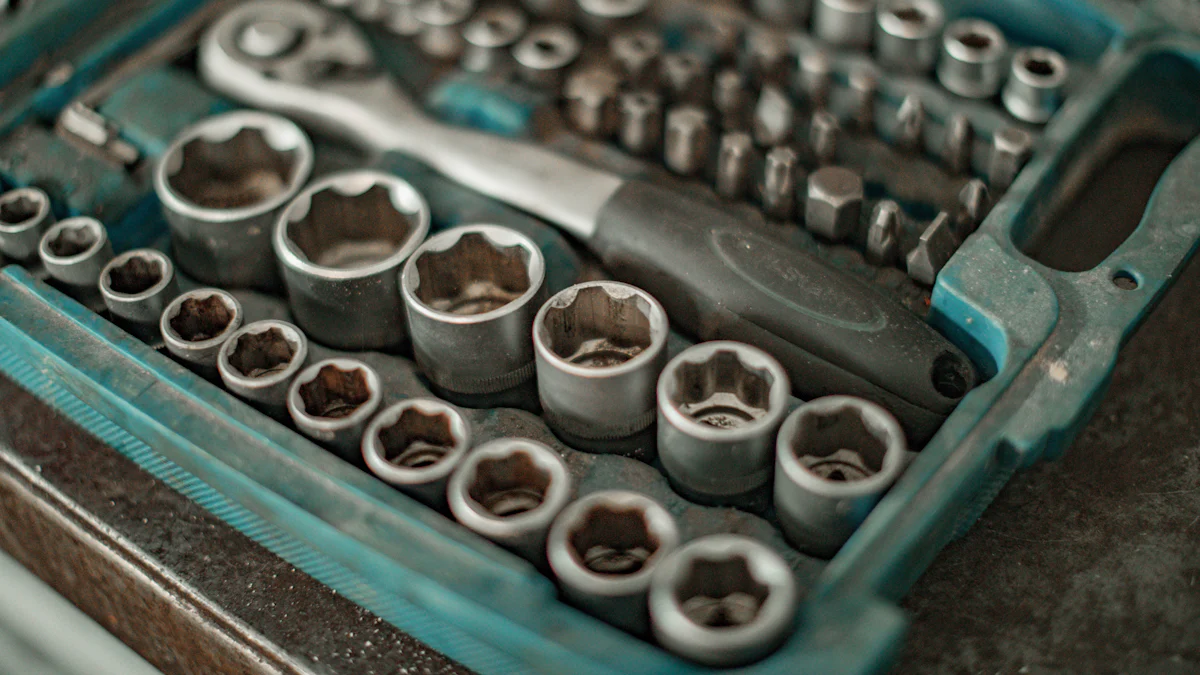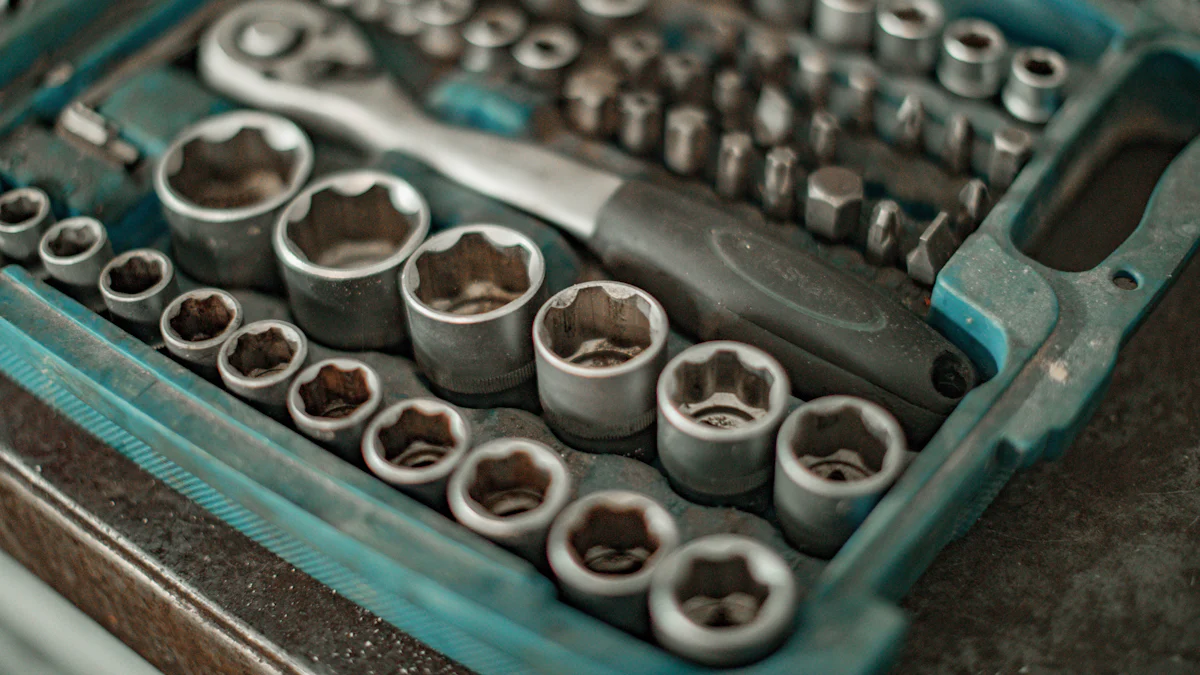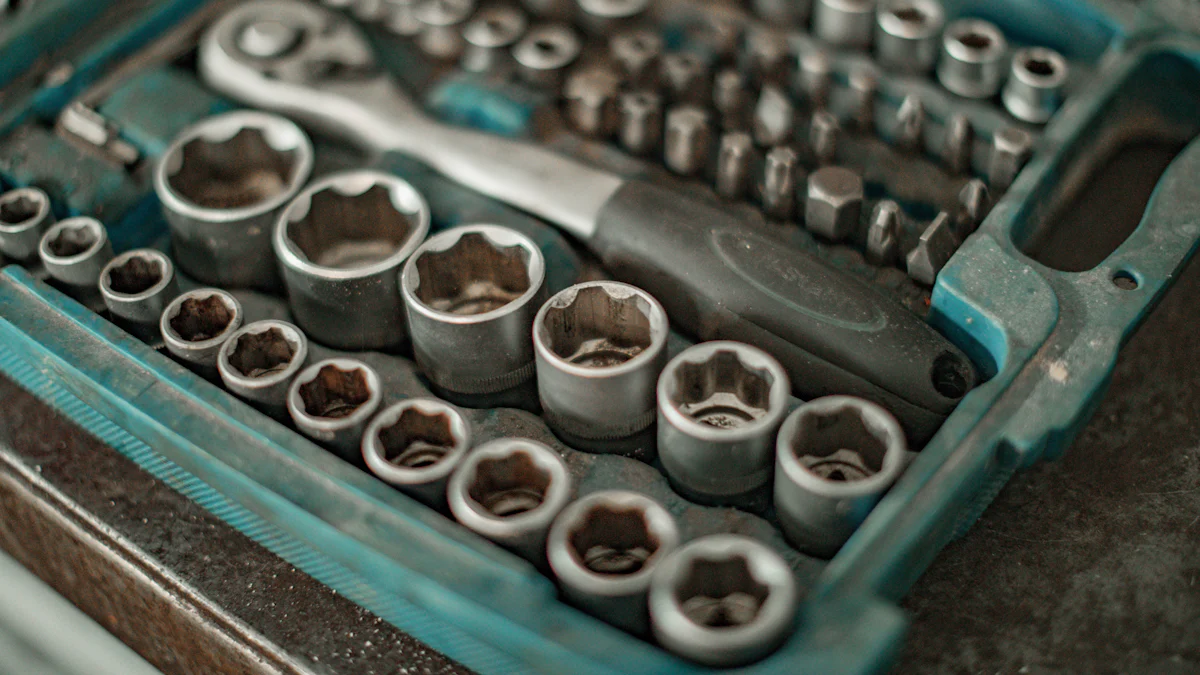
Torque wrenches play a crucial role in ensuring precision and safety in various mechanical tasks. Proper use of a torque wrench prevents damage and ensures that fasteners are tightened to the correct specifications. An inch pounds torque wrench delivers precise torque for small fasteners, making it an essential tool for delicate applications. Accurate torque measurement is vital because deviations can lead to significant issues. For example, corrosion in the spring of a torque wrench handle can cause a deviation of up to 455% from control values. Understanding and using this tool effectively enhances both performance and safety.
Understanding the Inch-Pound Torque Wrench

Types of Inch Pounds Torque Wrenches
Beam Torque Wrench
The Beam Torque Wrench operates on a simple mechanical principle. A beam deflects as you apply torque to a fastener. A scale indicates the amount of torque applied. This type of wrench is reliable and requires no calibration. You can use it for basic applications where precision is not critical.
Click Torque Wrench
The Click Torque Wrench provides an audible click sound when reaching the desired torque setting. This feature helps you know when to stop applying force. The click mechanism prevents over-tightening, which can damage fasteners. This wrench suits automotive and general mechanical tasks.
Digital Torque Wrench
The Digital Torque Wrench uses an electronic sensor to measure torque. A digital display shows the torque value, offering high precision. This wrench is ideal for field or research applications where electronic data collection is necessary. The absence of moving parts reduces wear and tear, enhancing durability.
Importance of Torque Measurement
Ensuring Safety
Proper torque measurement ensures safety in mechanical tasks. Incorrect torque can lead to loose fasteners, causing equipment failure. You must ensure that every fastener meets the specified torque to prevent accidents.
Preventing Damage
Accurate torque application prevents damage to components. Over-tightening can strip threads or break fasteners. Under-tightening can cause parts to loosen over time. Using an inch pounds torque wrench helps maintain the integrity of your equipment.
Achieving Precision
Precision in torque application is crucial for delicate tasks. An inch pounds torque wrench delivers the exact force required for small fasteners. This precision ensures that assemblies function as intended without compromising performance.
Setting Up the Inch Pounds Torque Wrench
Setting up an inch pounds torque wrench correctly ensures accurate results. Proper setup prevents errors during use. Follow these steps for optimal performance.
Calibrating the Wrench
Calibration is crucial for maintaining accuracy in torque measurements.
Checking Calibration
Check the calibration of the inch pounds torque wrench regularly. Use a calibration device to verify the accuracy. Ensure that the wrench reads within the specified range. Adjustments may be necessary if deviations occur.
Adjusting Settings
Adjust the settings of the inch pounds torque wrench based on calibration results. Locate the adjustment mechanism on the wrench. Turn the adjustment knob or screw to align with the correct calibration value. Secure the setting to prevent accidental changes.
Selecting the Correct Torque
Selecting the correct torque is vital for achieving desired outcomes. Max Pro, an expert in torque wrenches, emphasizes the importance of choosing the right tool for specific applications.
“Selecting the right torque wrench for your applications and sticking to the torquing best practices are critical to achieving the desired outcomes.”
Understanding Torque Specifications
Understand the torque specifications for each task. Manufacturers provide torque values for different fasteners. Refer to these specifications to determine the required torque. Use the inch pounds torque wrench to apply the exact force needed.
Using Manufacturer Guidelines
Follow manufacturer guidelines when using an inch pounds torque wrench. These guidelines offer detailed instructions for proper use. Adhering to these instructions ensures safety and precision. The guidelines also help prevent damage to components.
Using the Inch Pounds Torque Wrench

Step-by-Step Usage Instructions
Preparing the Fastener
Begin by selecting the appropriate fastener for your task. Ensure that the fastener is clean and free from debris. Align the fastener with the hole or surface where it will be used. This alignment ensures that the inch pounds torque wrench can apply force evenly. Proper preparation prevents damage to both the fastener and the surface.
Applying the Torque
Set the desired torque value on the inch pounds torque wrench. Disengage the lock on the wrench, then rotate the handle to the correct setting. Re-engage the lock to secure the setting. Position the wrench on the fastener and apply force smoothly. Listen for the click sound, which indicates the correct torque has been reached. Stop turning immediately upon hearing the click to avoid over-tightening.
Verifying the Torque
After applying torque, verify the accuracy of the setting. Use a torque verification tool if available. Check that the fastener is secure and meets the specified requirements. Verification ensures that the inch pounds torque wrench has performed accurately. This step is crucial for maintaining the integrity of your work.
Common Mistakes to Avoid
Over-Tightening
Over-tightening occurs when excessive force is applied to a fastener. This mistake can strip threads or break the fastener. Always stop applying force when the inch pounds torque wrench clicks. Avoid using the wrench beyond its capacity to prevent damage.
Under-Tightening
Under-tightening results from insufficient force applied to a fastener. This mistake can cause parts to loosen over time. Ensure that the inch pounds torque wrench is set to the correct torque value. Verify the torque after application to confirm accuracy.
Incorrect Calibration
Incorrect calibration affects the accuracy of the inch pounds torque wrench. Regularly check the calibration to ensure precision. Re-calibrate the wrench if it has been dropped or used excessively. Follow the manufacturer’s instructions for calibration procedures.
Additional Tips and Recommendations
Maintenance of the Torque Wrench
Proper maintenance of an inch pounds torque wrench ensures its longevity and accuracy. Regular care keeps the tool in optimal condition.
Regular Cleaning
Clean the inch pounds torque wrench after each use. Use a soft cloth to wipe away dirt and debris. Avoid using harsh chemicals that might damage the tool. Inspect the wrench for any signs of wear or damage. Regular cleaning prevents buildup that can affect performance.
Proper Storage
Store the inch pounds torque wrench in a dry, cool place. Use a protective case to prevent exposure to moisture and dust. Keep the wrench in a relaxed position to avoid stress on the spring mechanism. Proper storage maintains the wrench’s precision over time.
Related Tools and Accessories
Using related tools and accessories enhances the functionality of an inch pounds torque wrench. These additions provide versatility for various applications.
Torque Wrench Extensions
Torque Wrench Extensions increase the reach of an inch pounds torque wrench. Use extensions to access hard-to-reach fasteners. Ensure the extension is compatible with your wrench model. Proper use of extensions maintains the accuracy of torque application.
Torque Angle Gauges
Torque Angle Gauges measure the angle of rotation after reaching a specific torque. Use these gauges for tasks requiring precise angular measurements. Attach the gauge to the inch pounds torque wrench for accurate readings. Torque angle gauges ensure consistent results in complex applications.
Understanding how to use an inch pounds torque wrench effectively ensures consistent accuracy. Proper usage prevents over-tightening or under-tightening, which can damage fasteners and tools. Selecting the right torque wrench for your specific needs is crucial. Each type of wrench serves different purposes, so choose wisely. Regular maintenance and careful handling extend the life and accuracy of the tool. Practice these skills to enhance your proficiency. Applying this knowledge in real-world situations will improve your mechanical tasks and ensure safety.
